All News
-
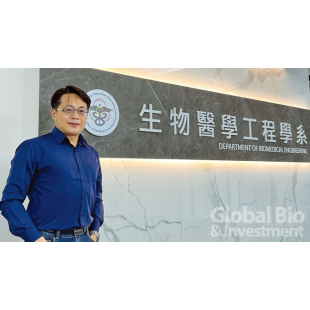
[ Repost ] Building the Top Brand for Health and Well-being Technology Talent - National Yang-Ming Chiao Tung University's Department of Biomedical Engineering Nurtures Next-Generation Innovators in the Field of Medical Materials.
打造健康福祉科技人力第一品牌-陽明交大醫工系孵育下世代創新醫材領航者
陽明交大生物醫學工程學系是全臺國立大學中首個具有大學部、碩士班與博士班的生物醫學工程學系,至今已有近40年歷史,擁有兼具工程學核心與基礎醫學的課程,讓學生進入臨床實地尋找醫療痛點, 並攜手產業共同研發醫材,持續讓學生如沃土中的種子般發芽茁壯,成為國內相關科系的標竿。
橋接工程與生物醫學 打破醫師與工程師間的高牆
生醫電子、生物力學、生醫材料 三大領域教師 引領人才豐厚產業
教學合作醫院 深化臨床需求與創新研發
報導連結:環球生技 https://news.gbimonthly.com/tw/article/show.php?num=55133
[ Repost ] Building the Top Brand for Health and Well-being Technology Talent - National Yang-Ming Chiao Tung University's Department of Biomedical Engineering Nurtures Next-Generation Innovators in the Field of Medical Materials.more -
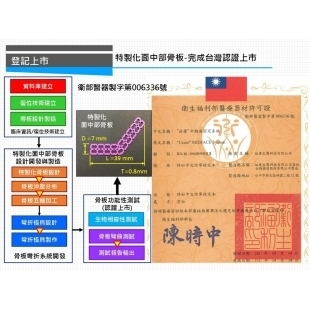
[ Repost ] National Science Council Grants Aid Industry-Academia Collaboration Project Achievements - New Customized Central Metallic 3D Printed Bone Plates Registered for Market Listing.
國科會補助產學計畫成果-新式客製化面中部金屬3D列印骨板登記上市
臨床上,可能因為車禍外傷、外力撞擊或是腫瘤性疾病造成面中部骨折缺陷,若沒有受到合適的治療,將可能導致顏面部外觀不對稱、咬合不正和眼睛產生複視等問題,目前臨床上最有效的治療是由整形外科醫師利用傳統微型骨板進行面中部骨折復位與重建手術,然而卻還面臨定位不佳及復位不穩定等問題。
報導來源:經濟日報
國立陽明交通大學生物醫學工程學系林峻立特聘教授主持國科會工程處產學合作研究計畫,精進開發出一項具導引定位/固定/力學穩定性的客製化(patient-specific)面中部金屬3D列印骨板,其單片式骨板開發不但根據國人影像資料庫而設計,同時可依據病患的顏面曲率製作沖壓模具而將骨板成型,此創新的設計及成型法,可有效輔助游移骨復位,亦可承受面中部支撐力學。此項開發已通過法規所要求之生物相容性及功能性測試,且通過衛福部食藥署(TFDA)認證登記上市(衛部醫器製字第006336號),目前已於各大醫院臨床測試中。
計畫團隊在客製化面中部骨板生物力學分析中,證實目前手術使用的市售微型骨板的骨頭會產生應力集中,因此無法傳遞咬合力量,會導致骨應力傳遞不佳復位失敗。而透過資料庫設計的面中部骨板功能性測試則可符合上市之法規標準,其彎曲強度均優於市售微型骨板。
林峻立教授現任國立陽明交通大學生物醫學暨工程學院院長,亦擔任創新醫材轉譯研發中心主任。他於2021年以「手持式高齡智能舌壓量測與復健系統」榮獲第17屆國家新創獎。林峻立教授所帶領的「生醫工程分析實驗室」擁有電腦輔助工程設計及製造(CAD、CAM)、電腦輔助工程分析及有限元素分析(CAE、FEA)、影像處理重建、3D列印/積層製造、拓樸最佳化、晶格微結構設計、靜/動態功能性測試、客製化生物力學實驗及音洩破壞等核心技術,主要應用於臨床的骨科、牙科、復健科、骨腫瘤科、脊椎骨科、整形外科、神經外科、及齒顎矯正科,聚焦於醫療植入物從臨床需求、產品設計、小量試產、臨床前測試及輸出報告的整個開發流程,後續再輔導廠商將這些有效報告提交給TFDA/FDA進行產品查驗登記,通過之後產品即能上市應用於臨床。
林峻立教授表示,成功的醫材開發必須和臨床醫師密切合作,從臨床需求出發,然後將學校的技術應用於醫材的設計、試量產和測試,在通過認證與上市之後,還要能在臨床的應用落地。同時,因為醫療器材牽涉到各國的相關法規,因此醫學工程教育及醫材產業需熟習各國法規及其修訂,與時俱進。
臺灣的醫材產業已經過政府長期的扶植和推動,林峻立教授指出,現階段的當務之急是要擴大市場,以優良的產品創造出更大的經濟效益。在臺灣,可以透過各種方式鼓勵國人使用國產醫材,從而累積臨床數據,持續精進產品,並進行臨床試驗發表。他說:「透過臨床使用數據的公開發表,才會讓全世界看到臺灣研發的新創醫療器材,即使與國外的產品相比也絲毫不遜色,甚至更好,全世界就會看到我們的存在點。當臨床使用數據變得龐大,才能在國際上大量曝光,要讓全世界的人都知道,才有辦法跟全世界競爭。」
林峻立教授觀察到東南亞的國家對於通過TFDA認證的醫材接受度相當高,因此,建議政府部門結合醫師和醫材產業,深耕南向市場。他說:「把產品帶出去,廠商有一定的經濟效益跟收入,臺灣的醫材產業才能有正向的循環。廠商賺錢,我們在學校投注心血培育的優質醫工人才,才能灌注到臺灣的醫材產業,締造經濟效益。」[ Repost ] National Science Council Grants Aid Industry-Academia Collaboration Project Achievements - New Customized Central Metallic 3D Printed Bone Plates Registered for Market Listing.more -
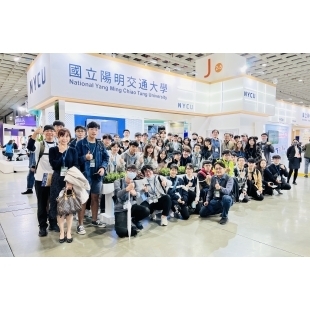
Visited the Taiwan Medical Technology Exhibition on December 2, 2022.
Date: December 2, 2022
Attendees: 70 faculty and students from the institute
Taiwan Medical Technology Exhibition and AI Smart Healthcare Equipment and Sustainable Innovation Technology Trends Seminar
Location: Taipei Nangang Exhibition Center Hall 1
Co-organizing Unit: Ministry of Education’s Precision Health Cross-Disciplinary Talent Cultivation Program
Exhibition Features:
Specialty Medical Care
Smart Hospitals, Medical Equipment, and Supply Chain
Precision Diagnostics, Biotechnology, New Drugs, and Cell Therapy
Inno Zone for Innovative Technologies
Smart Health Technology and Preventive Medicine
Sports Health Technology
Ageless Health Living
Agricultural Biotechnology and Food Safety & Health
Visited the Taiwan Medical Technology Exhibition on December 2, 2022.more -
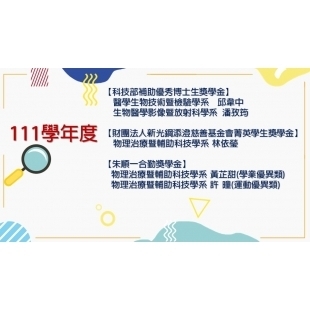
Congratulations to our students for receiving scholarships for the 111th academic year!
Congratulations to our students for receiving scholarships for the 111th academic year!more -

Congratulations to our Institute for winning 3 Future Technology Awards 2022!
Technology Name: DeepBT Brain Tumor Smart Precision Medical System: Along-Time Axis Lesion Detection and Radiosurgery Efficacy Prediction
Project Team: Dr. Wu Yu-Te and Dr. Lu Jia-Feng
Technical title: Near-infrared dual-mode fluorescence + photoacoustic 3D small animal imaging system combined with homemade polymer fluorescence/photoacoustic dye for whole-body and tumor vascular imaging in mice
Project Team: Dr. Jiang Huihua and Dr. Li Yizhan
Exhibit Name: Simulating Precise Hearing Organs: Deep Learning Class Neurointelligence Network Noise Cancellation Method for Next Generation Electronic Ear
Project Team: Dr. Yinghui LaiCongratulations to our Institute for winning 3 Future Technology Awards 2022!more -
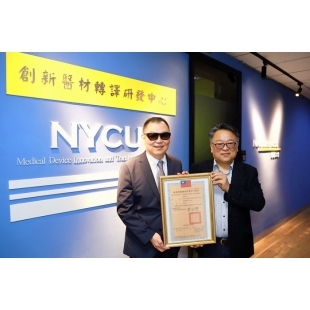
[ NYCU News ] NYCU has obtained the license of medical equipment manufacturer and seller, which will inject new momentum into the commercialization of medical equipment
陽明交大率先取得醫材製造及販賣商許可證
「醫療器材管理法」於2021年5月1日新制上路,本校為接軌此一變革,在林奇宏校長支持推動下,由「創新醫材轉譯研發中心」彙整資料、申請辦理,分別於今年8月及9月相繼獲得醫療器材販賣商及製造商兩項許可證(醫用軟體及植入物),將可為醫療器材商品化注入新動能。
根據「醫療器材管理法」新制,學研單位獲主管機關同意,即可申請以設計為主的醫療器材製造及販售許可證。這項措施對於學研單位所研發之醫療器材的品質、價值及技轉提升有莫大助益,同時也能發揮國科會補助計畫的經濟效益。因此,本校於新制上路後即積極進行申請,並順利獲得上述兩項許可證。
本校創新醫材轉譯研發中心主任林峻立教授表示,醫療器材的成功研發,並不只是單純的將工程技術應用於生物醫學即可,而必須在滿足「臨床需求」前提下,整合法規檢測/臨床前測試(或臨床測試),產業QMS建立等階段工作後,才能進一步進行查驗登記取證,後續方能進入「臨床落地」等應用。因此,創新醫材轉譯研發中心在本校所扮演的角色,在以「推動生醫工程鏈結」、「整合健康醫療資源」、「發展醫材產業聚落」及「推動創新研發主軸」為主軸,全力發展Med-Tech為目標,為我國醫療器材開發注入巨大研發轉譯能量。
「創新醫材轉譯研發中心」團隊以精準醫療植入物、高值生醫材料、精準診斷與智慧輔具、精準醫療影像與生醫感測照護等五大研發主軸領域組成
醫療器材販賣商及製造商許可證的取得,不僅有助於校內研發團隊縮短醫材上市時程,更強化本校合校後於智慧醫材的發展。以醫用軟體開發為例,在經過軟體臨床前各項測試、軟體確效後,即可進行QMS系統認證;經過衛生福利部TFDA查核通過後,即可進行製造及查驗登記,可免去其他項醫材必須具有相對應QMS製造廠商方可生產的困境,同時可加速研發團隊成果商品化,並邁向臨床落地的真正效益。
本校藉由取得醫療器材製造商執照以及販售業許可(認證字號MD6101000739與MD6201041374),近期將由創新醫材轉譯研發中心規劃偕同校內醫用軟體研發團隊申請醫療器材品質管理系統(QMS)認證,可望於明年初查核通過,並向衛福部TFDA申請醫療軟體之查驗登記。
此外,創新醫材轉譯研發中心除取得醫療器材製造及販售許可證,並與生物醫學暨工程學院申辦勞動部人才發展品質管理系統訓練機構評核認證,不但首次申請就獲通過,並取得銅牌佳績。未來本校將可承接辦理TFDA之醫材技術人員訓練之認證課程,以提昇從業人員之專業技能,為我國醫材產業發展貢獻專業與心力。
本校獲得之醫療器材販賣商(由左至右)、製造商許可證,以及勞動部人才發展品質管理系統訓練機構評核認證書[ NYCU News ] NYCU has obtained the license of medical equipment manufacturer and seller, which will inject new momentum into the commercialization of medical equipmentmore -
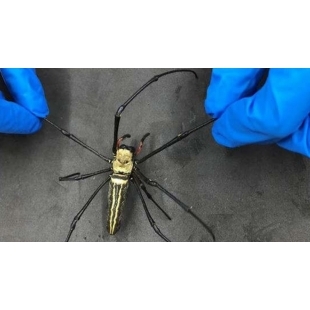
[ NYCU News ] Amazing! Human-faced spider spit out spider silk to measure blood sugar! New breakthrough in optical fiber measurement of blood sugar
(Chinese Health Network Reporter Man-Ying Huang / Taipei © Provided by Chinese Health Network)
It's amazing! The palm-sized Nephila pilipes spider is intimidating, but the spider's silk can be used to measure blood sugar and serve as a diabetes management tool. Prof. Cheng-Yang Liu and Ms. Xuan-Bei E of the Department of Biomedical Engineering, Yang Ming Jiaotong University, have successfully developed a fiber optic glucose sensor using the spider's spider silk.
Amazing! A spider with a human face spits out spider silk, but it can detect blood sugar! A new breakthrough in measuring blood glucose with fiber optics © by Chinese Health Network
With the aging population, diabetes is now a common disease. Patients who monitor their blood glucose by puncture at home are not only prone to the risk of infection, but also the puncture needle becomes medical waste after one use, so scientists are always striving to develop more convenient and real-time blood glucose detection methods.
Unlike traditional optical fibers made of glass or plastic, spider silk not only has good ductility and physical properties such as light wave transmission, but also has a high degree of biocompatibility, making it very suitable for use in the human body. After obtaining natural spider silk from a live spider, Prof. Cheng-Yang Liu's research team, in collaboration with Taipei Medical University and Taiwan Instrument Technology Research Center of National Taiwan Research Institute, first stabilized the spider silk structure with light-curing resin, and then sputtered a thin nanogold shell on the surface of the cured spider silk with an oblique thin-film sputtering technique to increase the sensitivity of the spider silk fiber to sugar concentration. The final product is a fiber optic sensor with a diameter of about a hair and visible to the naked eye.
The process of spider fiber fabrication. (Photo courtesy of Yang Ming Jiaotong University) © Courtesy of Chinese Health Network
Through the optical physics principle of surface plasmon resonance (SPR), scientists can calculate the refractive index of different sugars on metals to know their concentration changes. The optical sensor developed by Prof. Cheng-Yang Liu has been experimentally proven to maintain the same sensitivity over a year and to function normally at room temperature and human body temperature.
The research team led by Prof. Cheng-Yang Liu uses spider fiber to measure blood glucose, which can be a tool for future diabetes management. (Photo courtesy of Yang Ming Jiaotong University) © Courtesy of Chinese Health Network
In fact, in order to find suitable materials, the R&D team tried two to three different species of spiders and also caught spiders on campus for experiments, but unfortunately, the quality of spider silk was not very stable, and only after many attempts did they choose the sphinx spider as the main target. In order to get high quality spider silk, the R&D team must also learn how to keep spiders and design silk extraction methods.
The spiders were not only huge, but they were also afraid of spiders with long faces on their backs at first. In the process of making the spider silk fiber, the research team also tried a variety of resins, gold, silver, copper and other metals, so they met the bosses of reptile stores, resin manufacturers, etc., which is considered an unexpected harvest.
Prof. Cheng-Yang Liu said that diabetic patients need to monitor their blood sugar before and after meals, and a sensor that can be used in the human body for a long time and measure blood sugar accurately in real time will not only solve the patients' problems, but also achieve the goal of precision medicine and benefit more chronic disease patients.
In addition to Yang Ming Jiaotong University, the research results also include the participation of researcher Weijun Chen, researcher Zheqin Chen, and professor Jiaxiong Cheng from the Department of Medicine, National Taiwan Research Institute. The research results will be published in the September issue of Biomedical Optics Express and selected as an Editor's Choice for the publication.[ NYCU News ] Amazing! Human-faced spider spit out spider silk to measure blood sugar! New breakthrough in optical fiber measurement of blood sugarmore -
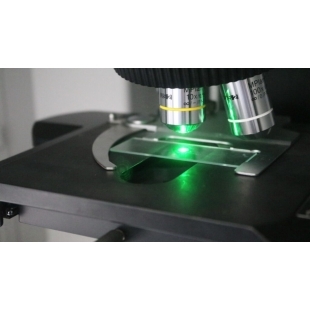
[ NYCU News ] Laser light + metal nanoparticles, Yangming Jiaotong University pushes the detection limit of mercury content to 0.2ppb
▲Raman spectroscopy uses the scattered wavelength of light incident on an object to measure the material (the material in the picture is molybdenum disulfide)
The natural residual concentration of mercury in cosmetics in China is 1 ppm, but the Institute of Biomedical Photonics, Yang Ming Jiaotong University has successfully used magneto-plasmonic nanoparticles in combination with laser light, and surface-enhanced Raman scattering (SERS) to reach the measurement limit of 2 ppb. SERS) to reach the measurement limit of 2 parts per billion (0.2 ppb). This technique has the potential to bring a more convenient approach to heavy metal detection.
The Food and Drug Administration prohibits the addition of heavy metal mercury to cosmetic products except for natural residues, but because mercury inhibits the activity of tyrosinase in the skin and reduces melanin production, there are still unscrupulous operators who add mercury to them. Therefore, the heavy metal content of cosmetic whitening products has been the focus of inspection. However, most of these heavy metal tests can only be done in laboratories using huge instruments such as mass spectrometers.
The principle of Raman Spectroscopy, where the wavelength of light scattered into an object differs from the original wavelength, depending on the material of the object, has been considered to have potential for material analysis. However, the scattered signal is small and often disturbed by the light emitted from the object itself after illumination, making the signal difficult to resolve.
▲Prof. Xue Te, Institute of Biomedical Photonics, Yang Ming Jiaotong University
To overcome this problem and make the theory applicable in practice, a common method is to cover the sample with a metallic substrate, i.e., a Surface-Enhanced Raman Scattering Substrate. Prof. Surojit Chattopadhyay, M.S., M.S., and Dr. Akash Gupta of Institute of Biomedical Photonics, Yang Ming Jiaotong University (YJTU), fabricated iron oxide nanoparticles and coated them with a layer of metallic silver, and used a magnet to make the iron oxide nanoparticles aggregate.
This technique of using laser light to combine nanoparticles to enhance Raman spectroscopy through surface enhancement has been used to measure the natural residue of mercury in commercially available whitening cosmetics, and it can detect the limit of mercury ion concentration up to 2 ppb (0.2 ppb), which is much lower than the current requirement of 1 ppm in Taiwan. This shows that this technology is not only more sensitive in detection but also has the potential to be applied to detection.
▲500 nanometers of magnetic plasma nanoparticles
Professor Sitt said that if cosmetics contain heavy metals, they may be poisoned by long-term trace absorption through the skin. Although today's heavy metal detection methods are accurate, they require a large number of samples and professional technicians to operate in the laboratory. The process of using Raman spectroscopy to detect substances is simple and fast, as long as the light can be irradiated substances can be detected, including solids, liquids, gases, etc..
Many scientists have invested in the development of nanosubstrates for surface-enhanced Raman scattering in the hope that this theory can be put into industrial applications. This time, Yang Ming Jiaotong University has successfully found a nanoparticle that can amplify Raman signals and be used for detecting cosmetics by wrapping iron oxide with a silver coating; how to steadily regulate the structure of metal nanoparticles and create a reusable substrate is a challenge for future commercialization. This study was published in 2021 in Sensors and Actuators B: Chemical, No. 337, an important journal for photoelectric sensing technology.
Source: Laser light + metal nanoparticles push the limit of mercury detection to 0.2 ppb at Yang Ming Jiaotong University - NYCU National Yang Ming Jiaotong University[ NYCU News ] Laser light + metal nanoparticles, Yangming Jiaotong University pushes the detection limit of mercury content to 0.2ppbmore -
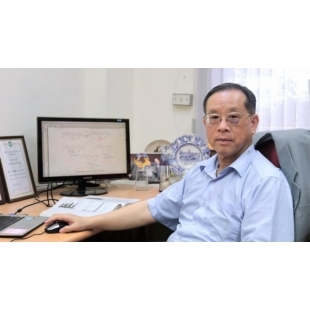
[ NYCU News ] The miraculous silk protein restores the beating of the heart that stopped beating. The Rongyang Jiao team successfully used biomaterials to convert cardiomyocytes into rhythmic cells.
The Department of Biomedical Engineering at Yang Ming Jiaotong University, Professor Zhong Jiwen said that silk protein has a proven track record as a biomaterial because of its high biocompatibility, and he has also used the same material to make heart muscle patches that repair heart muscle cells.
In Taiwan, more than 40,000 people are equipped with pacemakers, and now scientists have discovered a biomaterial made from silk that can convert heart muscle cells that would otherwise not discharge electricity into heart rhythm cells that can beat themselves, allowing the heart to resume beating. This major discovery has changed the way people think about the treatment of arrhythmias and has led to a study from Taiwan that was featured in the top international journal Nature Biomedical Engineering.
The heartbeat of about 60-100 beats per minute comes from the discharge of the sinoatrial node of the pacemaker, a spontaneous electric current that allows the heart's muscles to contract and pump blood throughout the body. However, as we age, the organ always wears out over time. Because of the aging failure of the pacemaker rhythm cells, a slow heartbeat may occur, such as sinus syndrome and atrioventricular conduction block, resulting in weakness, difficulty breathing, fainting, and even sudden death, with a prevalence of about 1% to 2%. The prevalence rate is about 1% to 2%. This figure may be higher in elderly people over 65 years old.
The current treatment for this heart-borne disease is a two-hour surgery to install a pacemaker in the body. However, the pacemaker requires battery replacement in about 6 to 8 years, invasive surgery also has the risk of surgical infection, and even in the era of the prevalence of cell phones, such installation of electronic pacemaker patients must also be as far away from the heart as possible, so scientists invariably hope to find alternative methods.
The research team, led by Professor Zhong Jiwen of the Department of Biomedical Engineering at Yang Ming Jiaotong University and Dr. Yu-Feng Hu of the Department of Cardiology at the Taipei General Hospital, successfully used silk from a modified farm in Miaoli, Taiwan, to purify silk protein gel, which was injected into the hearts of mice to convert heart muscle cells that would otherwise not beat into pacemaker rhythm cells that could discharge electricity. This is the first time that silk proteins have been used as surgical sutures and artificial dressings, but this is the first time that silk proteins have been found to have mechanical and biochemical properties, as well as cellular transformation and bioelectricity production.
In animal studies, the research team found that silk proteins can be used as biomaterials to initiate the ectopic expression of calcium mucin in cardiac muscle cells, initiating a series of downstream mechanisms that allow the heart to be recharged and restored. In other words, the research team has re-generated the cells that discharge electricity from the heart. In this way, once the sinus node ages or becomes diseased, the newly generated cells can take over the important role of discharging electricity to keep the heart beating.
Dr. Yu-Feng Hu and Prof. Ji-Wen Chung of the Department of Cardiology at Northwestern University have discovered that biomaterials made from silk proteins can convert cardiac muscle cells that would otherwise not discharge electricity into self-beating heart rhythm cells, allowing the heart to resume beating.
The company's main goal is to provide the best possible service to its customers.
The research team tried dozens of biomaterials and finally found a way to use silk protein, said Professor Zhong Jiwen of the Department of Biomedical Engineering at Yang Ming Jiaotong University. He said that silk protein is highly biocompatible as a biomaterial, in fact, there are signs, including artificial skin, surgical sutures, wound dressings can be found in its trace. He has also used the same material to make myocardial patches to repair heart muscle cells, showing that domestic silk has the potential for advanced medical applications.
Dr. Yu-Feng Hu and Professor Chung met at a conference four years ago, sparking this collaboration. Dr. Yu-Feng Hu describes how he found that the heart muscle cells "came to life" and kept beating when he incubated them on Chung's silk proteins, and began the research to find out why.
The study was published in Nature Biomedical Engineering, a division of Nature, and proved that in addition to stem cell culture and gene therapy, biomaterials also have the potential to treat heart-borne diseases.
Source: Silkworm protein restores a heart that has stopped beating, and a team at NYCU successfully uses biomaterials to convert heart muscle cells into rhythm cells - NYCU[ NYCU News ] The miraculous silk protein restores the beating of the heart that stopped beating. The Rongyang Jiao team successfully used biomaterials to convert cardiomyocytes into rhythmic cells.more -

[ NYCU News ] "The Research Center on International Classification of Functioning, Disability and Health and Assistive Technology" Receives Certificate of Appreciation for 20 Years of Contribution
Deputy Director of Social and Family Affairs Department, Ministry of Health and Welfare, Mei-Mei Chang (left) presents a certificate of appreciation to Director Li Shu-Ching
This year also marks the 20th anniversary of the ICF and Assistive Technology Research Center, a university-level research center of National Yang Ming University of Transportation, helping to promote assistive device services for people with physical and mental disabilities, and the establishment of the Multifunctional Assistive Device Resource Integration and Promotion Center commissioned by the central government. At the National Liaison Meeting on Nov. 26, the Deputy Director of the Social and Family Affairs Department of the Ministry of Health and Welfare, Mei-Mei Chang, presented a certificate of appreciation to the team led by the Director of ICF, Shu-Ching Li, for their contribution to the development of assistive technology services in China over the past 20 years.
In her acceptance speech, Ms. Lee talked about the 20 years of her life spent in running the Center and building the national assistive device service system, and cited the following five major achievements of the Center in the past 20 years.
First of all, the center introduced the core concept of the international assistive devices classification standard - ISO 9999 at the early stage of the development of the assistive devices service system in China. It is the first achievement of the Center to shape the development of assistive services in China from a broad perspective.
Furthermore, since 2005, the team of the Center has been commissioned to build the "Aids Resource Portal" in Taiwan, which integrates all the information on aids in the fields of industry, government, academia, research, and medicine, and is a valuable and leading platform of aids information in the world. This is the second major achievement of the Center.
The Social Welfare Administration of the Ministry of Health and Welfare thanks the ICF and Assistive Technology Research Center of Yang Ming Jiaotong University for its 20 years of assistance in promoting the development of assistive technology services.
In addition, with the joint efforts of all of us, the new system of ICF for the protection of the rights of the physically and mentally disabled was launched in 2012, making "assistive devices services" a statutory service for the physically and mentally disabled in China. As a WHO observer in 2019, Director Li was pleased that our country has a state-of-the-art system of assistive devices that is proud of the world. Helping to plan and promote a new system of assistive services based on professional understanding and meeting needs is the third major achievement of the Center.
The key to the success of the auxiliary service is not only the training of human resources and the professional quality management of the auxiliary service centers, but also the experience of our country over the years shows that strengthening the support function of county and municipal governments through evaluation indicators and guiding the integration of services between county and municipal governments and auxiliary service centers, instead of focusing only on the auxiliary service centers, is a pragmatic and highly effective approach, which is also a model worthy of international promotion. The fourth major achievement of the Center is to establish evaluation indicators that effectively promote the success of the auxiliary aid services in Taiwan.
Lastly, the ICF and Assistive Technology Research Center of National Yang Ming University of Transportation has been hosting the Assistive Devices and Long-term Care Exhibition since 2016, which is an international professional exhibition with more than 100,000 visitors for three consecutive years. Among the many functions of this exhibition, it provides a positive learning platform for assistive technology professionals to learn about the latest international assistive technology development, and through a more comprehensive understanding of the products and manufacturers, it will be conducive to the improvement of professional services. The fifth major achievement of the center is to successfully link the three elements of assistive technology development: professionals, industry and products.
2021 Aids and Long-term Care Exhibition
Director Lee said that there are still many goals to be developed in the future, which need to be improved step by step in a competitive manner.
First of all, 2022 will be a new era for our country's auxiliary aids services, including the draft amendment of the benchmark table of auxiliary aids for the physically and mentally disabled, which has been notified through the efforts of the Social Welfare Department and is scheduled to be officially implemented on September 1 next year. It is expected that the new system of auxiliary aids will be implemented smoothly next year, including the continued support of county and municipal governments and the smooth transformation of auxiliary aids centers, so as to successfully move to the next stage.
In addition, for the successful implementation of the new system of aids for the mentally and physically disabled and Long Term Care 2.0, the participation of inter-ministerial units is very important, including the effective performance of the functional roles of each ministry and the positive interaction and cooperation between ministries.
Finally, the current situation shows that the volume of long-term care assessment services in most county and city auxiliary care centers has increased significantly, which indicates the inevitable trend of further integration of mental and physical disabilities and long-term care services in the social welfare system, including the integration of auxiliary care center audits by the central authorities.
Under the leadership of Director Li, the Multifunctional Assistive Devices Resource Integration and Promotion Center has assisted the Ministry of Health and Welfare in the vertical and parallel coordination of various units for 20 years, and has worked hard to promote the policy of assistive device services, the training of assistive device professionals, and the development of the industrial market. We look forward to your continued support and to working together for a better and more prosperous future!
Source: 20 Years of Glory! "ICF and Assistive Technology Center of Yang Ming Jiaotong University Receives Certificate of Appreciation for 20 Years of Contribution - NYCU National Yang Ming Transportation University[ NYCU News ] "The Research Center on International Classification of Functioning, Disability and Health and Assistive Technology" Receives Certificate of Appreciation for 20 Years of Contributionmore -

Congratulations to Professor Wang, Yang, and Liu for winning the top 2% of the world's top scientists!
Congratulations to Professor Wang, Yang, and Liu for winning the top 2% of the world's top scientists!Congratulations to Professor Wang, Yang, and Liu for winning the top 2% of the world's top scientists!more -
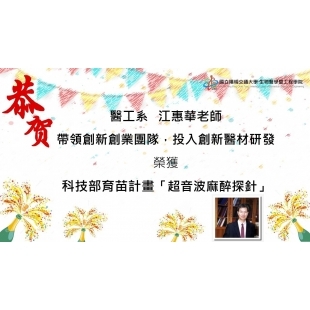
Congratulations to Jiang Hui-hua from the Department of Medical Engineering for leading the team to invest in the research and development of innovative medical materials "Ultrasonic Anesthesia Probe" won the Ministry of Science and Technology Seedling Pr
Congratulations to Jiang Hui-hua from the Department of Medical Engineering for leading the team to invest in the research and development of innovative medical materials "Ultrasonic Anesthesia Probe" won the Ministry of Science and Technology Seedling ProgramCongratulations to Jiang Hui-hua from the Department of Medical Engineering for leading the team to invest in the research and development of innovative medical materials "Ultrasonic Anesthesia Probe" won the Ministry of Science and Technology Seedling Prmore












